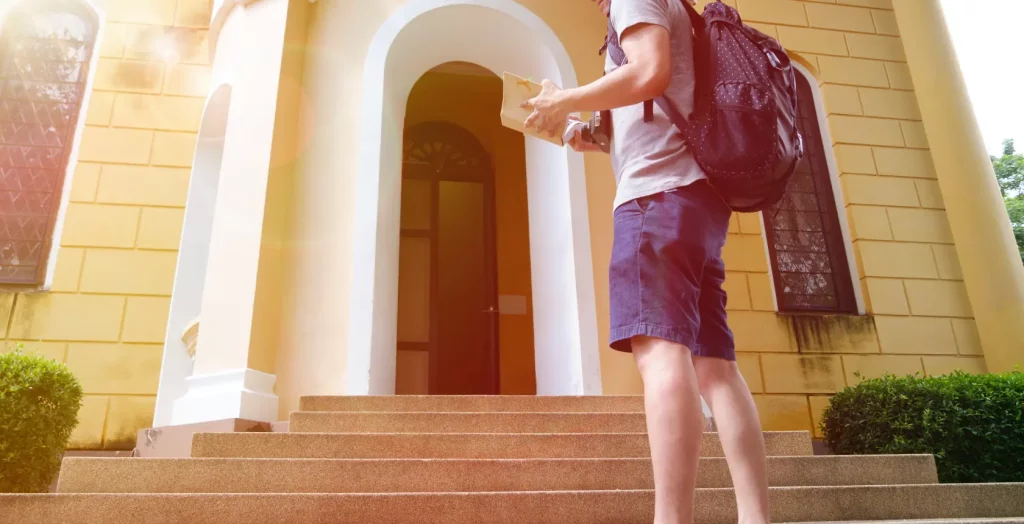As educators committed to improving student well-being and performance, we first must understand our students.

The most effective way to be a student of our students is to become a student for a day. One of the greatest professional learnings for our Palo Alto administrative team arose from my requirement that they each shadow a student for a day. We followed the the Shadow a Student Challenge protocol developed from a collaboration between the Stanford d.school’s K12 Lab Network and IDEO. The toolkit is a free download from: http://shadowastudent.org/how-it-works.
I chose to shadow a seventh grade student who was also named Max. Dressed for the day in my Giants t-shirt, cargo shorts, and running shoes (which would prove most useful later in the day), we met for first period science. Max was a typical seventh grade boy. He liked school when it was interesting, loved sports, had a close peer group, was reasonably conscientious, and mostly a minimalist when it came to writing. Science proved to be a good deal of small group work and gave him plenty of opportunity to talk with his group and others, be up and moving, and make progress on their group project. “I like classes where we can move,” he mentioned as we went to second period art. Art was an individual project but the teacher’s interjections were informative, entertaining, and relevant. He was a good story teller and played music. “Mr. J’s class is one of my favorites. I’m not that good at art but he makes it fun and let’s me know that I will get better if I keep trying.” His third period English teacher also had a great sense of humor and spent some time helping him revise an essay. “She’s super cool,” he remarked. Then it was time to change for gym. I managed to run the mile with the rest of the class though got passed by plenty of the kids, but the real running came after class. “We have to run to lunch,” Max exclaimed, “or that won’t be time …” and he was off. He was also correct because the lunch lines were endless and had we not run we would not have time to bottle flip, chase friends, or laugh a lot.
Then came the death march. Three classes in a row of “sit and git.” The school wisely banned cell phones, but it was a hot day and I along with a number of boys were struggling to stay awake. Math was especially crushing. Homework check involved the teacher quickly glancing at the previous night’s work to see if it was done, followed by a demonstration of how to do problems, followed by starting on the homework. Max’s water bottle had run dry and midway through the period, he told me he had to go to the nurse. He showed up for last period looking a little refreshed and I asked him how he was feeling. He confessed he just needed some water and air. The final bell rang, and as I navigated the crowded corridors I found myself wondering how they managed. The teachers were all highly competent and truly caring but even our long board meetings were preferable to seven classes a day every day.
During the day I had made entries in the journal we downloaded from the toolkit and that evening a completed a lengthy reflection. Our 60 member administrative team did the same, and at the end of the month we met to discuss the four recommended prompts:
- What did you see that you felt good about?
- What questions came up for you?
- What would you like to change?
- What new ideas did this experience spark?
Among our learnings:
- Block schedules and longer passing periods are better for students’ learning
- All students – especially boys – MUST move during every class
- Kids connect best with teachers who know them as people
- The “criss cross applesauce” seating for primary grade kids is uncomfortable for large students
- Students’ attention span is short at all ages. Keep the lesson moving.
- Too much homework is busy work
- Good teachers are already personalizing instruction
- Observations and evaluations should focus on student behaviors, not teacher behaviors
- Instruction trumps curriculum when it comes to student learning
- Very few students have a voice in what and how they learn
- Teaching is really hard work – even in classes with really good students
- Kids don’t fool around much when the teachers are engaging and when they can move
- Access to water matters a lot
- Not having access to cell phones during class is a good idea
What we committed to doing:
- Actively engaging student voice
- Changing the evaluation system to focus on what students are doing
- Working on a modified block schedule (two days/week) in middle school
- Modeling movement, access to water, and engaging during our faculty meetings
- Holding drop in “office hours” for students outside the office
- Providing professional development on care and connection, social emotional learning, growth mindsets, and movement.
Being a student of a student was one of the top three highlights of the year. To quote student Max as we shook hands and went our separate ways at the end of the day – he to baseball practice; me to a nap – “It was pretty cool.” That it was, and I hope you try it yourself this year!

